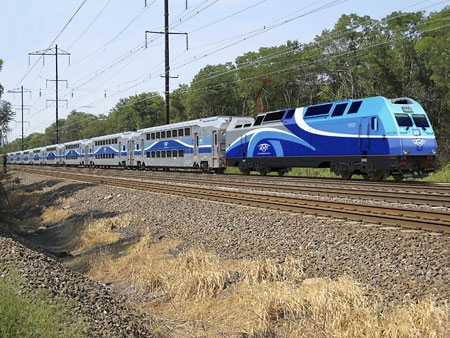
Railway land swap brings about property development opportunities
But cooperation between Singapore and Malaysia is needed to pursue each of their respective national and economic objectives.
Based on a report released by DTZ Research, the historic agreement between Malaysia and Singapore to settle the long-standing railway land issue which runs through Singapore to Malaysia will open up property development opportunities in Singapore and Iskandar Malaysia (IM) not envisaged before.
Singapore
For Singapore, judicious land allocation has always been an integral part of real estate planning and development given its limited land size. The reversion of the railway land will thus enable the authorities to amalgamate the track land with adjacent sites and bring about more optimal use of the land.
However, DTZ Research opined that most of these sites will not be developed upon immediately because some of the adjacent lands are already in use, while there is no urgency to develop the large tracts of vacant land that are next to the tracks.
Among the returned railway land in Singapore, the railway station site at Tanjong Pagar has the greatest redevelopment potential given its size and the government’s plans for this district. The once sleepy Tanjong Pagar area is perking up with newly completed and pipeline offices, hotels and apartments. Higher rents and prices are being achieved and more investors are becoming interested in the area.
Ms Chua Chor Hoon, Head of South East Asia Research commented, “The Spottiswoode area just north of the railway station may be totally rejuvenated as the old existing residential developments are prime candidates for redevelopment.”
While the rest of the returned land are unlikely to be developed anytime soon, one area that is likely to see some earlier new developments will be at Bukit Panjang where a MRT station will be ready in 2015 which will provide some impetus to develop the vacant land around it.
DTZ Research noted that there has been no evidence of a jump in prices for residential homes next to the railway track due to the impending removal of the railway line. Buyers are not likely to pay 5-10% more as the noise from the trains is not continuous and there is also a concern on what could come up in place of the railway tracks.
Iskandar Malaysia
According to DTZ Research, the warmer bilateral relations, and smoother and cheaper transport system arising from the agreement will give a boost across all property sectors in IM.
In the healthcare sector, the joint development of the iconic wellness township will set a benchmark to raise the international profile of IM to a new level and spur other foreign investors.
More skilled and semi-skilled migrants from other parts of Malaysia could be attracted to reside in IM to take advantage of the employment opportunities in Singapore through daily commute without having to pay for the high residential cost of living in the Republic. Demand for homes from foreign buyers, particularly Singaporeans, is envisaged to improve due to the higher confidence level in IM from the warming bilateral ties. However, it remains to be seen if IM can attract Malaysians with Singapore permanent residence status to move back from Singapore.
In the office sector, there is potential for a shift of low-end commercial service activities, namely back office processes, from Singapore into the Johor Bahru CBD to take advantage of cost arbitration, given the widespread use of the English language and the general availability of mid-level executives in Johor. More industrial and logistics investments can also be expected from Singapore.
For retail, the main beneficiaries will be prime shopping centres in the city centre as well as destination shopping developments linked with key tourism attractions such as Legoland and Johor Premium Outlet.
Hotels in IM, especially those in the JB city centre, can generally benefit from the shortage of budget and mid- priced rooms in Singapore during peak periods and spin-off from the growth in medical tourists. Over the longer term, there will be potential to develop higher quality hotels, once room rates increase to a level that justifies such developments.
Nusajaya will benefit the most from the land swap agreement, being located in the centre of three major catalysts - Tanjung Pelepas Port, Senai Airport, and JB City. With a proposed MRT line linking JB city centre to Nusajaya, there will be a tendency for a shift in value towards Nusajaya as more newer physical developments take place and the cost of using the Second Link becomes more competitive.
A New Chapter
The railway agreement has unfolded a new chapter for Malaysia and Singapore and both countries can co-build a new growth story that resembles the Hong Kong-Shenzhen Metropolis model.
However, unlike Hong Kong and Shenzhen which are both under one country, a lot more co-operation and government involvement is needed between Singapore and Malaysia to overcome two distinct economic and legal systems and build trust and co-operation, whilst pursuing their respective national and economic objectives.
Brian Koh, Executive Director of DTZ Malaysia commented, “The degree of success of Iskandar Malaysia will be partially determined by political co-operation with neighbouring Singapore as well as by economic factors.”
























 Advertise
Advertise






